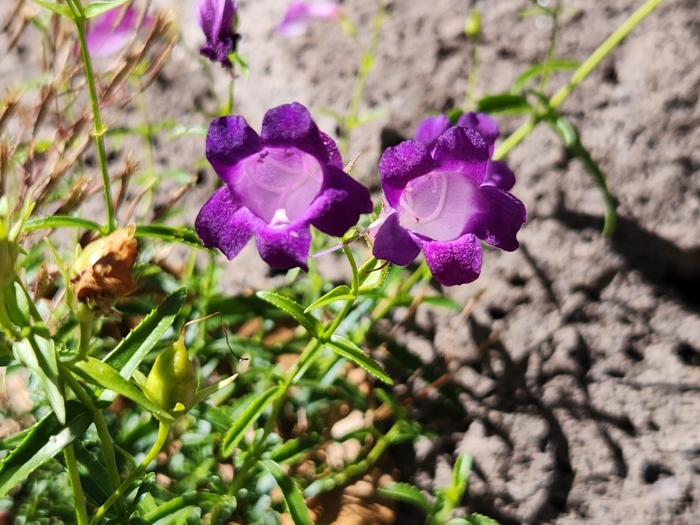Bellflower Beardtongue
(Penstemon campanulatus)
Bellflower Beardtongue (Penstemon campanulatus)
/
/

Alejandra Peña Estrada
CC BY 4.0
Image By:
Alejandra Peña Estrada
Recorded By:
Copyright:
CC BY 4.0
Copyright Notice:
Photo by: Alejandra Peña Estrada | License Type: CC BY 4.0 | License URL: http://creativecommons.org/licenses/by/4.0/ | Rights Holder: Alejandra Peña Estrada | Publisher: iNaturalist | Date Created: 2023-10-13T12:33:32-07:00 |

























Estimated Native Range
Summary
Penstemon campanulatus, commonly known as Bellflower Beardtongue, is a perennial herb native to the open woodlands and grassy slopes of Mexico. It typically grows up to 1 meter tall and has a clumping form with erect stems. The large, bell-shaped purple flowers bloom in early to mid-summer and are quite showy, attracting both gardeners and pollinators alike. The foliage is lance-shaped and sometimes has a bluish-green hue.
Bellflower Beardtongue is valued for its striking floral display and its ability to attract hummingbirds and bees, making it a popular choice for wildflower gardens, natural landscaping, and pollinator-friendly plantings. It is also used in border plantings and as a cut flower due to its tall, upright growth habit. This species thrives in full sun and requires well-drained soils; it is relatively drought-tolerant once established, making it suitable for xeriscaping. While generally low-maintenance, it can be susceptible to root rot in poorly drained soils and may suffer from powdery mildew. To promote vigorous growth and flowering, deadheading spent blooms is recommended.CC BY-SA 4.0
Bellflower Beardtongue is valued for its striking floral display and its ability to attract hummingbirds and bees, making it a popular choice for wildflower gardens, natural landscaping, and pollinator-friendly plantings. It is also used in border plantings and as a cut flower due to its tall, upright growth habit. This species thrives in full sun and requires well-drained soils; it is relatively drought-tolerant once established, making it suitable for xeriscaping. While generally low-maintenance, it can be susceptible to root rot in poorly drained soils and may suffer from powdery mildew. To promote vigorous growth and flowering, deadheading spent blooms is recommended.CC BY-SA 4.0
Plant Description
- Plant Type: Shrub, Herb
- Height: 2-3 feet
- Width: 1.5-2 feet
- Growth Rate: Moderate
- Flower Color: Purple, White
- Flowering Season: Spring, Summer, Fall
- Leaf Retention: Deciduous, Semi-deciduous
Growth Requirements
- Sun: Full Sun
- Water: Low
- Drainage: Medium
Common Uses
Bee Garden, Bird Garden, Border Plant, Butterfly Garden, Hummingbird Garden, Low Maintenance, Rock Garden, Showy Flowers, Street Planting
Natural Habitat
native to the open woodlands and grassy slopes of Mexico
Other Names
Common Names: Canterbury Bells Penstemon
Scientific Names: , Penstemon campanulatus, Penstemon angustifolius, Penstemon elegans,
GBIF Accepted Name: